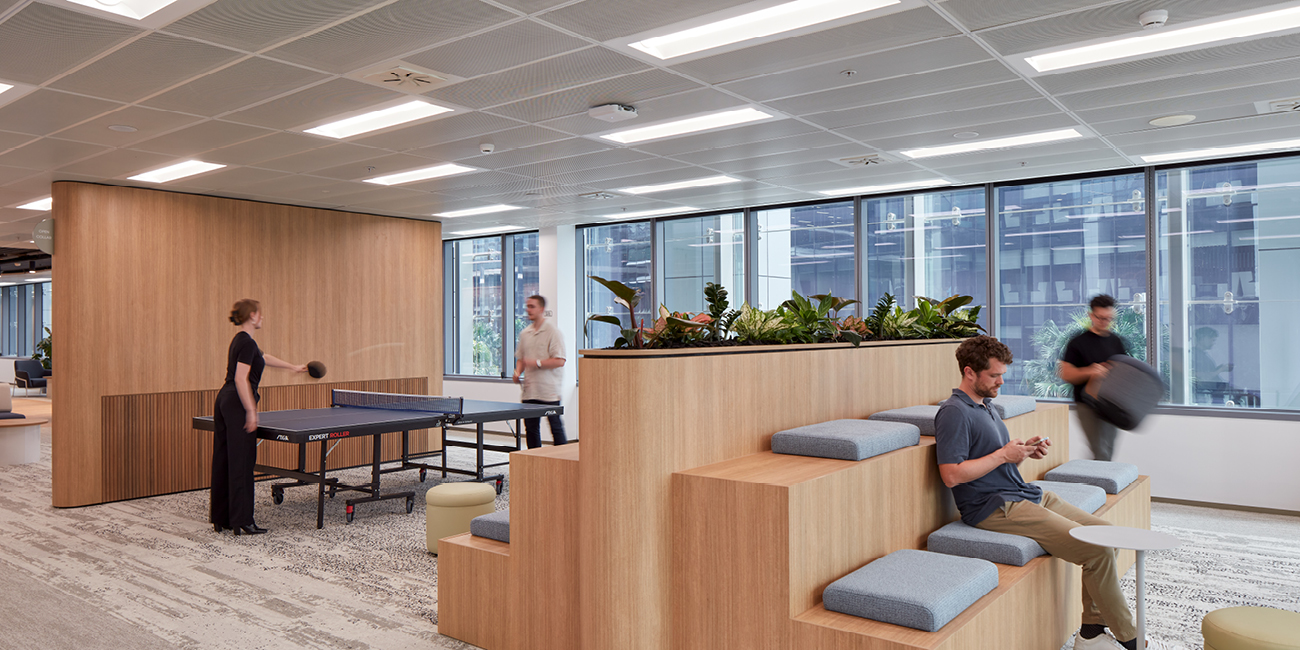Creating Spaces for Wellbeing
Creating Spaces for Wellbeing
In today’s fast-paced world, where we spend most of our time indoors, the design of our built environments plays a crucial role in our overall wellbeing. Whether it’s a corporate office, a healthcare facility, or an educational institution, the spaces we inhabit significantly impact our health, comfort, and productivity. As architects, designers, and construction professionals, it’s essential to consider the end user’s in every project and the importance of creating spaces for wellbeing.
THE IMPORTANCE OF DESIGNING SPACES FOR WELLBEING
Health and Comfort: A well-designed building can enhance the physical and mental health of its occupants. Natural light, air quality and acoustics are all factors that contribute to a healthy indoor environment. By prioritising these elements, we create spaces that not only look good but feel good, too.
Productivity: Research has shown that the environment we work in directly affects our productivity. In office settings, for example, well-designed spaces can reduce stress, improve concentration, and boost overall employee satisfaction. This leads to better performance and reduced absenteeism.
Sustainability: Designing for wellbeing also aligns with sustainability goals. Buildings that promote health and comfort often incorporate sustainable practices, such as using eco-friendly materials, optimising energy efficiency, and minimising waste. This approach not only benefits the environment but also enhances the long-term value of the property.
HOW DO METAL CEILING SOLUTIONS CONTRIBUTE TO WELLBEING?
Metal ceiling systems are more than just aesthetic choices; they play a vital role in creating environments that prioritise wellbeing. Here’s how:
Acoustic Performance: Noise pollution is a common issue in commercial buildings, especially in open-plan offices and busy public spaces. Metal ceilings can be designed with perforations and acoustic treatments to absorb sound, reducing noise levels and creating a more peaceful environment. This is particularly beneficial in spaces where concentration and communication are key.
Lighting Comfort: Metal ceiling finishes and coatings have reflective properties that can help enhance natural light distribution, reducing the need for artificial lighting and lowering overall energy consumption. This can lead to lower energy consumption and decreased greenhouse gas emissions associated with electricity generation.
Indoor Air Quality: Metal ceilings can contribute to better indoor air quality by minimising the accumulation of dust, mould, and other allergens. Their surfaces are easy to clean and maintain without the use of harsh chemicals, preventing environmental harm associated with cleaning agents.
Sustainability and Durability: Sustainability is at the heart of designing for wellbeing, and metal panels excel in this area. They are made from recyclable materials, have a long lifespan, require minimal maintenance, and recyclable. Choosing durable and sustainable materials like metal not only reduces the environmental impact of a building but also ensures that the space remains healthy and functional for years to come.
Tips for designing spaces that promote wellbeing
Incorporating natural elements creates a calming and restorative environment. Metal panels can be finished to mimic natural textures like timber, adding warmth and visual interest to interiors.
Designing with acoustics in mind creates spaces that are both functional and comfortable. Opt for metal panels with acoustic backings to minimise noise disruption.
Prioritising air quality by choosing materials that support healthy indoor air quality. Metal panels are an excellent choice for promoting a clean and healthy environment.
Thinking long-term by choosing durable, eco-friendly materials like metal, means you’re not only supporting the environment but also creating a space that will continue to benefit occupants for years to come.
Designing buildings for wellbeing is no longer just a trend; it’s a necessity. By considering the health, comfort, productivity, and sustainability of our built environments, we can create spaces that truly enhance the lives of their occupants. Metal ceiling systems offer a versatile and sustainable solution that contributes to wellbeing in multiple ways, making them an ideal choice for forward-thinking architects, designers, and builders.
As we continue to evolve in our understanding of how our environments affect us, the importance of designing for wellbeing will only grow. By incorporating thoughtful design strategies and high-quality materials, we can create spaces that not only meet the demands of today but also support the wellbeing of future generations.

